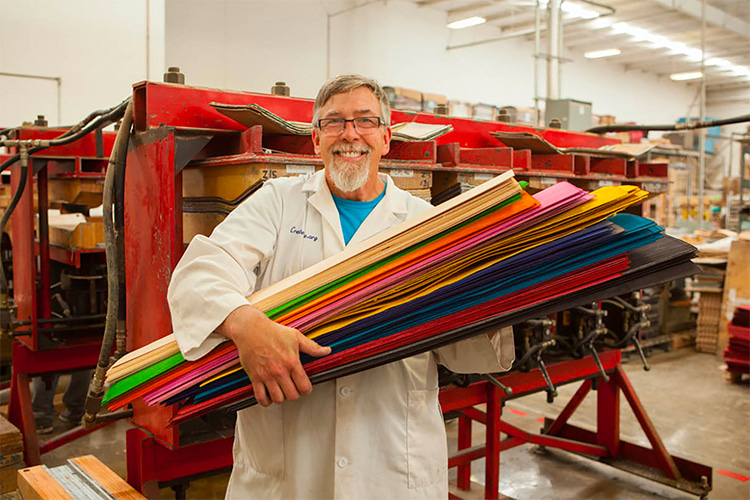For nearly two decades, Paul "The Professor" Schmitt has provided skateboarders with innovative, high-quality products.
Paul's history of involvement with skateboarding epitomizes the enthusiasm and dedication that has kept the sport alive during its downswings in mainstream popularity.
Paul started skating in 1973 on a clay-wheeled skateboard his neighbors had picked up at a swap meet for $3.
Not long after, he made a visit to a local department store to invest $20 in his very own board with urethane wheels.
In 1975, his family moved from Wisconsin to Tampa, Florida, where he skated in the streets until skateparks began to appear.
By 1977, skateparks had sprung up all over, and ramps and bowls were now the focus of the sport.
Skateboards had become wider, and rails were put underneath the boards to help skaters achieve a better grip as they did aerials.
In Clearwater, Florida, Steve Fisher made wood rails called Fish Stix. In California, Z-Flex made Grabair rails out of urethane.
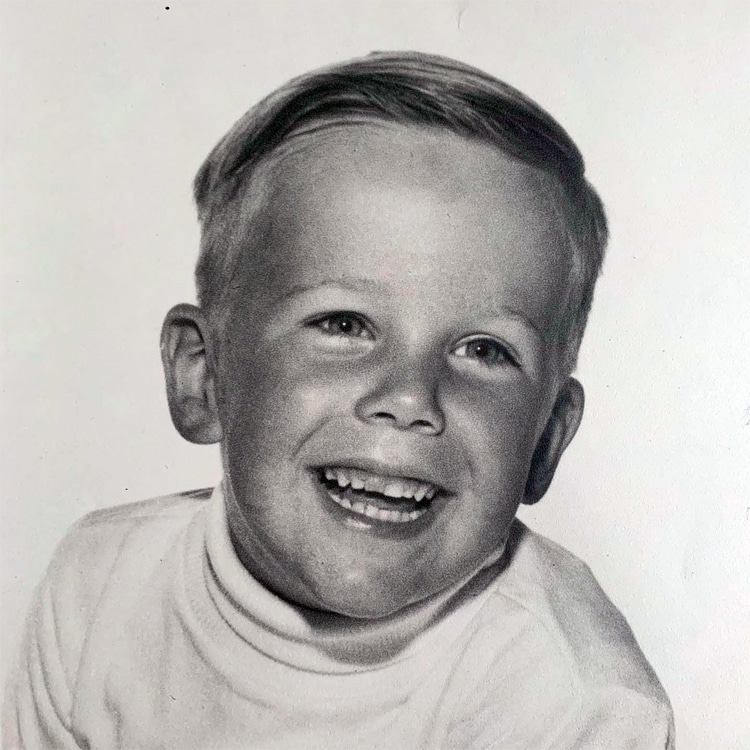
The Schmitt Stix Rails
In 1977, at age 14, Paul Schmitt made his rails out of wood and fiberglass so they would not break. However, neither wood nor urethane rails slid well.
At Alan Gelfand and Mike McGill's suggestion that rails should slide, Paul started making his rails out of a tough, durable plastic called UHMW polyethylene.
His rails were popular with local skaters, who dubbed them "Schmitt Stix."
These rails were cut out at the woodshop at school, drilled at a hardware store/woodshop where Paul worked, and then packaged in his parents' living room.
Schmitt Stix rails soon became popular all over Florida and were sold at several retail stores and skateparks across the state.
In 1979, Sims pro skater Mike Folmer took them with him on his cross-country road trips.
He spread the word about Schmitt Stix rails along the way, and influential pros like Brad Bowman started to ride them.
In 1980, Rax Works became Schmitt Stix's first California distributor.
Around this time, Paul started to have his rails extruded into a half-round, easy-to-grab, no-hang-up shape.
In 1981, Vision began to distribute his rails around the world.
Although rails were his main product, Paul had always liked building things and had long experimented with making his own boards.
In high school, Paul had the opportunity to gain some real-life work experience building sailboats at a local factory.
This allowed him to learn many different manufacturing processes, including mold making and working with fiberglass.
It was also an important experience in terms of forming his business philosophy.
Recalls Paul, "My supervisor, Eric Falago, let me know that it was OK to think differently about a job that Eric had done for 20 years. This was my foundation to go forward in many aspects of life."
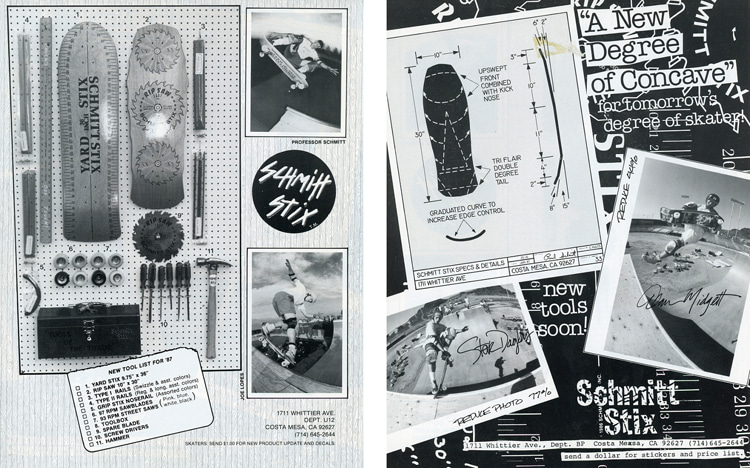
The Florida Ramps Years
By 1981, skateboarding had entered another slump - only the truly dedicated stayed with the sport.
In Florida, as elsewhere, the skateparks had all closed, except for Kona in Jacksonville.
Kona held a pro contest each year that brought the California skate pros east and became an annual convention for every skater left on the East Coast.
It gave these scattered and isolated skaters a chance to meet and find out what was happening with the sport.
One popular topic of discussion at the annual Kona event was ramp construction.
It became clear that many skaters were creating their own backyard ramps in response to the skatepark closings.
Paul Schmitt helped St. Pete locals rebuild John Grigley's ramp, which became the focal point for Florida skateboarding.
He also became active in the Florida Backyard Ramp Series.
He organized and promoted the contests for a few years, then documented them with photos and articles that appeared in Thrasher magazine.
It was the punk and new wave music era, with its do-it-yourself ethos.
As with music, communication among the different scenes was maintained through grassroots events like the Florida Backyard Ramp Series and by enthusiastic, creative people who published their own magazines.
St. Pete skaters made a zine called Just For Fun, and many other publications of all different shapes and sizes were produced across the country.
The Birth of Schmitt Stix Skateboards
During these years, Paul Schmitt continued to experiment with skateboard-making.
He purchased finished boards from a few California woodshops and blanks that he cut out and painted himself and started selling Schmitt Stix skateboards.
His first board press was his mom's car parked on top of the mold. Later, he moved up to a press with car jacks that he kept in his bedroom.
In early 1983, Paul wanted to attend a Tennessee skate contest.
The management at the boat company he worked for wouldn't give him the time off, so Paul gave them his six weeks' notice.
By a twist of fate, the contest was canceled.
At this point, with time on his hands and no other gainful employment, Paul decided to go into skateboard manufacturing full-time.
He had not been happy with the quality and designs of the boards he had been buying from the California woodshops, so he used his experience in mold construction to refine what he thought a skateboard should be.
Monty Nolder became the first pro riding for Schmitt Stix Skateboards.
Chuck Hults started working full-time for Schmitt Stix to make Monty's board, along with the Terrampula and the ATV models.
The company also began producing foam-core boards with fiberglass and foam in them to make them lighter and stronger.
After the summer 1983 edition of the Kona contest, the California pros came to the St. Pete ramp for the informal Just For Fun contest.
Word spread about the great ramp and good times.
Fausto Vitello from Thrasher helped to promote and run a full-blown backyard pro ramp contest over the New Year's holidays.
Both Thrasher and Transworld Skateboarding were there to cover it, and Monty Nolder's second-place finish gave Schmitt Stix a lot of exposure.
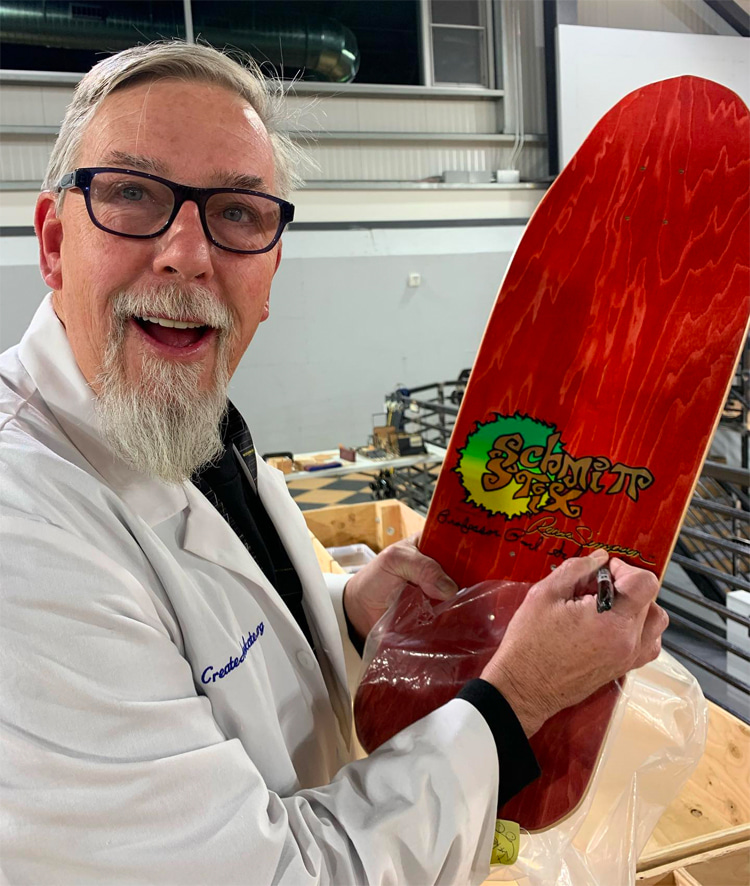
Teaming Up with Vision in California
By late 1984, Paul realized that Florida was not the place to be for a serious skateboard company.
Skateboarding was finally back on the upswing, and Schmitt Stix had massive potential for growth, but Paul didn't have the money needed for expansion.
A change would have to be made.
So in the Spring of 1985, Paul packed his shop in a U-Haul and, along with John Grigley and Chuck Hults, drove across the country to the skateboarding hotbed of California.
There, Schmitt Stix joined forces with Vision, which had been the largest distributor for its boards and rails.
Paul and his friends soon had a 1,000-square-foot shop where they lived and built boards for six months.
The St. Pete ramp had given Paul a reputation for building ramps so, along with his skateboards, he built and rebuilt quite a few ramps out west.
He also coordinated their construction for contests, but when he got too busy with Schmitt Stix, he passed on all ramp requests to Florida's Tim Payne.
Tim had done jobs with and for Paul and was the best ramp builder.
Tim has since gone on to build thousands of memorable ramps for all the National Skateboard Association (NSA) contests of the 1980s, the Animal Chin Ramp, and many more.
To give you an idea of the phenomenal rise of skateboarding's third wave, at the end of 1985, Vision's Brad Dorfman walked Paul into a 15,000-square-foot shop and announced it was Paul's new factory.
Within a year, the factory would be making 50,000 boards a month for Vision, Sims, and Schmitt Stix.
As Paul explains, "the best thing about the facility was that we could have an idea, build it and test it."
It was truly skater-directed research and development, with a staff consisting of Paul, Chuck Hults, Mike Pust, Barry Deck, and Kelly Bellmar.
John Lucero and Jeff Grosso joined the Schmitt Stix team in early 1986.
Many who started skating in the 1980s say that their first board was a Schmitt Stix. Innovation and consistently high quality were the two key ingredients of its success.
The 36-inch Yard Stix, introduced in 1987, is still a highly requested item today.
The Chris Miller board, introduced in 1988, with its 4.75-inch upturned nose, paved the way for the mold designs and high standards of today's skateboards.
During the late 1980s, despite his busy work schedule, Paul Schmitt found the time to help promote and run the NSA amateur series because he felt the promotion of amateur skating was important.
Most of the pros of the late 1980s and early 1990s competed in those events as amateurs.
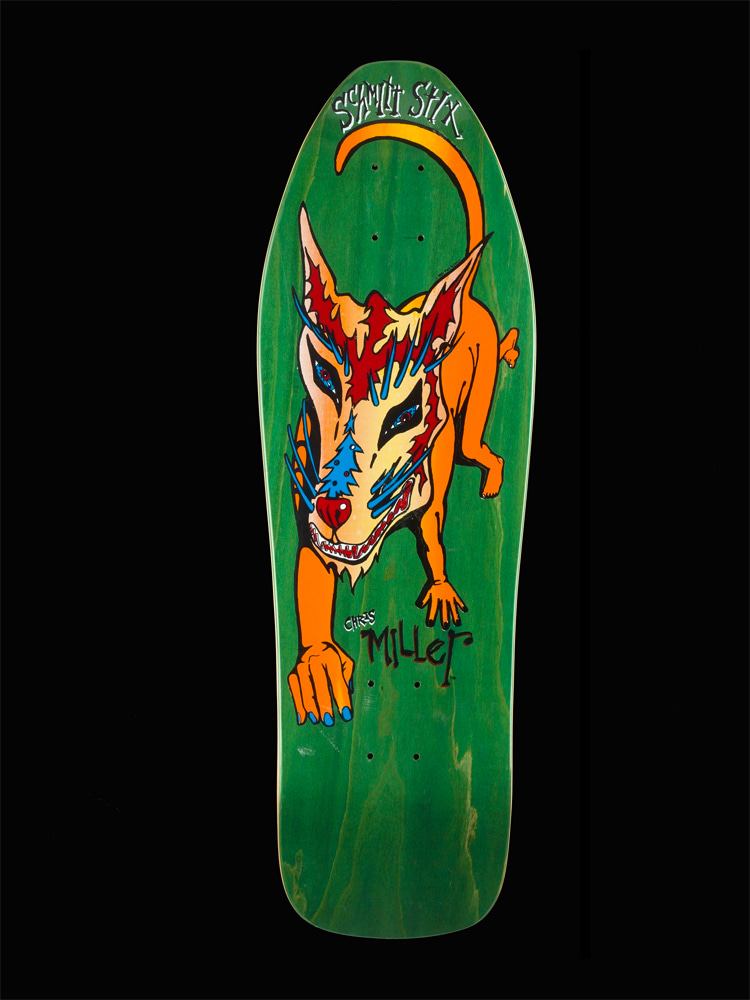
PS Stix and New Deal
As the 1980s drew to a close, Paul felt a need to move on.
Vision had become an enormous enterprise - boards, clothes, shoes, even snowboards - and Paul wanted to get back to basics.
He left the Vision empire and started a woodshop called PS Stix.
Schmitt Stix team riders did not feel comfortable in the shadow of Vision, so in Spring 1990, the New Deal skateboard company was founded, with Steve Douglas as the team manager and Andy Howell as the artist.
This company was an instant success.
As the traditional, established companies were falling, New Deal was on the rise due to its positive image and street-skating focus.
After two decades in a chaotic industry, Paul Schmitt remains devoted to the sport of skateboarding.
While he may have never gone to college, he will always be known as "The Professor" to skaters of the 1980s.
In 2007, the skate scientist launched CreateASkate, a nonprofit organization that designed a program to get children to make skateboards at school.
In 2020, Paul Schmitt was inducted into the Skateboarding Hall of Fame.
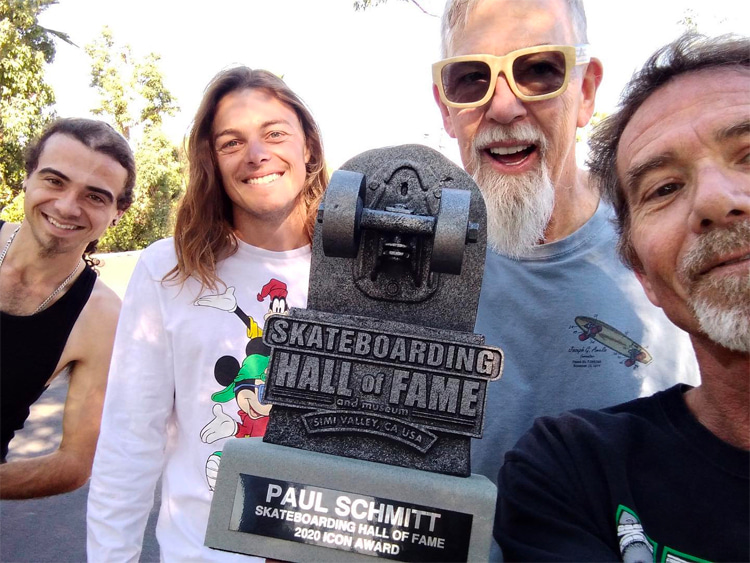
Paul Schmitt In His Own Words
The pure innocence of fun can be had while riding or watching others ride a skateboard, whether in their early stages of learning or as well-experienced riders.
I have gone every summer for the past years to experience and witness the fun of skateboarding at the Visalia YMCA Skate Camp.
This camp takes place in the central California mountains next to the Sequoia National Forest.
There is a concrete slab with many street ramps and a variety of half-pipes set up around a mountain lake.
You stay in rustic old cabins and share your experiences with new friends, old friends, nature, and your skateboard.
Here, you see young skaters who know no boundaries and continually push skateboarding because of it.
You get to teach young skaters how to do tricks, skate all day, and act like a kid.
Words by Michael Brooke | Skateboarder and Author of "The Concrete Wave: The History of Skateboarding"
